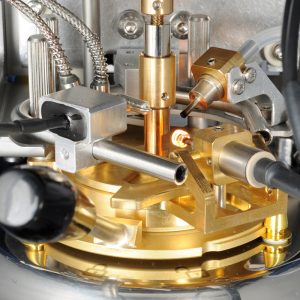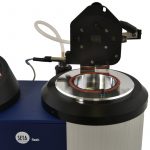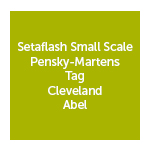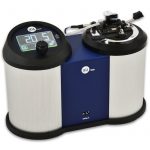When it comes to measuring flash point, Stanhope-Seta have more than 50 years of experience in the techniques involved and Seta instruments are today regarded as an international bench mark. We offer instruments to suit a wide range of test applications for many different industries.
View our full range of flash point instruments here >

What is flash point?
Flash point is the lowest temperature at which vapours from a sample combine with air to give a flammable mixture and ‘flash’ when an ignition source is applied.
A sample of specified volume is introduced to the test cup which is maintained at the test temperature. After a specified time, a test flame is applied and the presence or absence of a flash observed.
Types of flash point test
 Flash point is measured using either an open cup or closed cup flash point tester. Open cup tests are required in some specifications and regulations, and are intended to mimic conditions in open spaces, whereas closed cup tests are closer to most situations, where space is restricted.
Flash point is measured using either an open cup or closed cup flash point tester. Open cup tests are required in some specifications and regulations, and are intended to mimic conditions in open spaces, whereas closed cup tests are closer to most situations, where space is restricted.
Which flash point test method should you be using?
 The appropriate method for your sample is usually cited in a product specification or regulation, and in certain circumstances a referee test method may be stated, this method should be the first choice.
The appropriate method for your sample is usually cited in a product specification or regulation, and in certain circumstances a referee test method may be stated, this method should be the first choice.
What to consider when choosing a flash point tester
 Once you have determined which flash point test method you will be using, there are a number of things to consider before choosing your flash point tester, in particular safety and ease of operation.
Once you have determined which flash point test method you will be using, there are a number of things to consider before choosing your flash point tester, in particular safety and ease of operation.
Which instrument suits my sample?
 Flash point tests are carried out in a wide range of industries and applications from chemicals and lubricants to pharmaceuticals and perfumes for reasons such as compliance, quality control, storage, transport and safety.
Flash point tests are carried out in a wide range of industries and applications from chemicals and lubricants to pharmaceuticals and perfumes for reasons such as compliance, quality control, storage, transport and safety.
“For us the Setaflash tester is a valuable piece of kit and we’d struggle without it.”
 “Our main use is to detect whether a waste is hazardous or not, as this can have knock on effects in terms of cost, safety, compliance and potential processing routes. It’s very useful to have it at hand as sending samples out for off site analysis simply would not be an option at times, due to potentially lengthy turn around times.”
“Our main use is to detect whether a waste is hazardous or not, as this can have knock on effects in terms of cost, safety, compliance and potential processing routes. It’s very useful to have it at hand as sending samples out for off site analysis simply would not be an option at times, due to potentially lengthy turn around times.”
Castle Environmental